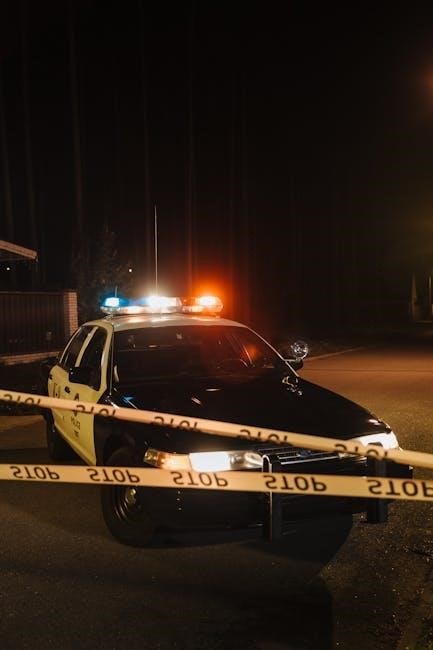
first alert smoke alarm carbon monoxide manual
This state-of-the-art device combines smoke and carbon monoxide detection, offering dual protection against deadly threats․ It features advanced sensors, intelligent sensing technology, and a user-friendly design for enhanced safety and convenience․
1․1 Overview of the First Alert Smoke & Carbon Monoxide Alarm
1․1 Overview of the First Alert Smoke & Carbon Monoxide Alarm
The First Alert Smoke & Carbon Monoxide Alarm is a cutting-edge safety device designed to detect both smoke and CO in a single unit․ It combines advanced electrochemical CO sensors with intelligent smoke detection technology to provide early warnings for fires and carbon monoxide leaks․ Compact, easy to install, and user-friendly, this alarm features voice alerts, LED indicators, and a test/silence button for convenience․ Its dual protection ensures comprehensive safety, making it an essential addition to any home or workspace․
1․2 Importance of Smoke and Carbon Monoxide Detection
Smoke and carbon monoxide (CO) detection are critical for protecting lives and property․ Smoke alarms detect fires early, reducing injury risks, while CO alarms identify odorless, deadly gas leaks․ Both threats are silent killers, often unnoticed until it’s too late․ A combined alarm ensures comprehensive protection, providing early warnings to prevent tragedies․ Proper installation and maintenance are essential to maximize safety and meet regulatory standards, ensuring round-the-clock monitoring against these hidden dangers․
1․3 Key Features of the First Alert Smoke & Carbon Monoxide Alarm
The First Alert Smoke & Carbon Monoxide Alarm offers a combination of advanced features, including a dual-sensor design for detecting both smoke and CO, advanced electrochemical CO sensors, and intelligent sensing technology to minimize false alarms․ It also features a single-button test/silence function, latching features for alarm identification, and an end-of-life signal․ The Perfect Mount system ensures easy installation, while the sealed battery design provides long-lasting protection․ These features ensure reliable performance and user-friendly operation․

Key Features of the First Alert Smoke & Carbon Monoxide Alarm
The First Alert Smoke & Carbon Monoxide Alarm combines advanced detection technologies with user-friendly features, ensuring reliable protection against fire and CO threats in your home․
2․1 Smoke & Carbon Monoxide Combination Alarm
The First Alert Smoke & Carbon Monoxide Alarm combines two essential safety features in one device, detecting both smoke and carbon monoxide․ This dual-protection alarm ensures your home is monitored for two deadly threats, providing early warnings to help prevent harm․ The smoke sensor detects particles from fires, while the CO sensor identifies dangerous gas levels․ With separate alerts for each hazard, you can quickly identify and respond to emergencies, ensuring a safer living environment with minimal installation and maintenance effort․
2․2 Advanced Electrochemical CO Sensor Technology
The First Alert Smoke & Carbon Monoxide Alarm features an advanced electrochemical CO sensor, designed for precise detection of carbon monoxide levels․ This technology provides accurate and reliable readings, ensuring early warning of dangerous CO concentrations․ The sensor is engineered to detect CO over time, offering enhanced sensitivity and responsiveness․ Its advanced design minimizes false alarms while maintaining high accuracy, providing a trusted layer of protection against this invisible threat․ This technology is a key component in safeguarding your home and family from carbon monoxide hazards․
2․3 Intelligent Sensing Technology to Reduce Nuisance Alarms
The First Alert Smoke & Carbon Monoxide Alarm incorporates intelligent sensing technology to minimize nuisance alarms․ This advanced system distinguishes between real threats and everyday activities, such as cooking smoke or steam, reducing false alarms․ By adjusting sensitivity based on detected particles, it ensures reliable performance without unnecessary interruptions․ This feature enhances user trust and overall safety, providing peace of mind while maintaining protection against genuine hazards․ Intelligent sensing technology is a crucial innovation in home safety devices․
2․4 Single Button Test/Silence Function
The Single Button Test/Silence Function simplifies operation, allowing users to test the alarm, silence unwanted alerts, and re-test after silencing․ This intuitive feature eliminates confusion by adapting its function based on the alarm’s current state․ With a single press, users can ensure the device is working properly or silence low-battery chirps and nuisance alarms․ This streamlined design enhances user experience, providing clear and efficient control over the alarm system without compromising safety or requiring complex interactions․
2․5 Latching Features for Alarm Identification
The First Alert Smoke & Carbon Monoxide Alarm features Latching Functions to help identify specific issues․ The Alarm Latch indicates which unit triggered the alert, while the Low Battery Latch highlights the detector needing attention․ These features remain active for about 15 minutes, conserving power․ They provide clear visual cues, making it easy to locate and address problems without confusion․ This functionality enhances user convenience and ensures prompt resolution of alarms or low-battery notifications․
2․6 Perfect Mount System for Easy Installation
The Perfect Mount System ensures secure and straightforward installation of the First Alert Smoke & Carbon Monoxide Alarm․ It includes a gasketless base and a mounting bracket that allows for easy alignment and secure fastening․ The system is designed to adapt to various surfaces, ensuring the alarm is level and properly installed․ This feature minimizes installation time and effort, providing a reliable setup for optimal performance and safety․ The optional locking feature adds an extra layer of security to prevent unauthorized removal․
2․7 End of Life Signal for Replacement Notification
The First Alert Smoke & Carbon Monoxide Alarm features an End of Life Signal, ensuring you know when it’s time to replace the unit․ After 10 years of service, the alarm will emit 5 chirps every minute and flash the green LED 5 times in sync․ This clear notification system prevents the alarm from failing silently, ensuring continuous protection․ Replace the alarm immediately when this signal occurs to maintain your home’s safety and comply with manufacturer recommendations for optimal performance․
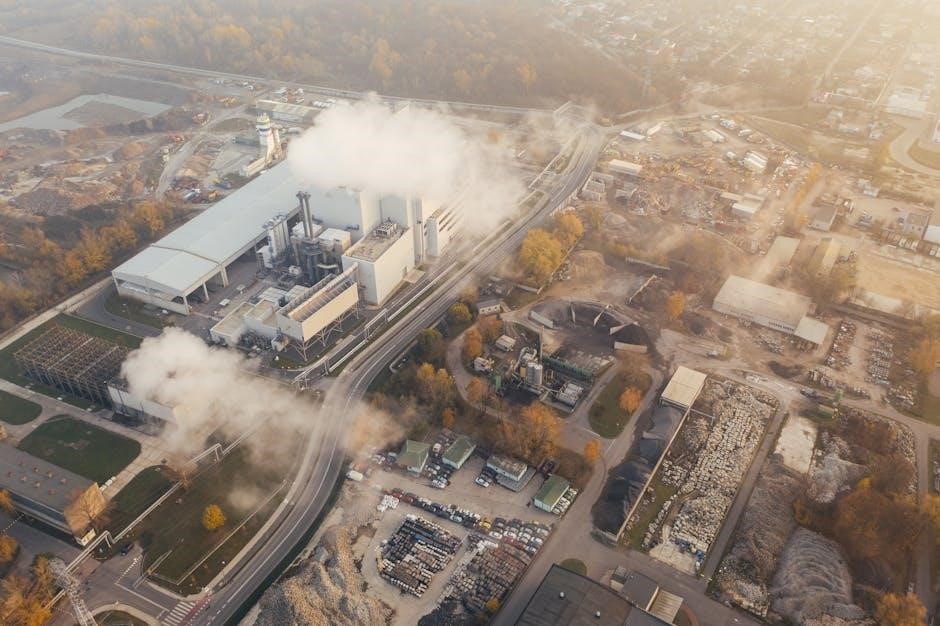
Installation of the First Alert Smoke & Carbon Monoxide Alarm

Installation of the First Alert Smoke & Carbon Monoxide Alarm
Install the alarm on ceilings or walls using a pencil, drill, screwdriver, and hammer․ Follow placement guidelines to ensure optimal detection and compliance with safety standards․
3․1 Recommended Placement for Smoke & CO Alarms
Install Smoke & CO Alarms on every level, inside sleeping areas, and near bedrooms; Place Smoke Alarms at least 4 inches from walls or corners on ceilings․ For CO Alarms, position centrally outside sleeping areas․ Avoid dead air spaces and ensure alarms are not obstructed by doors or insulation․ Follow NFPA guidelines for optimal coverage and safety․ Proper placement ensures early detection and enhances protection against fire and carbon monoxide threats․
3․2 Tools and Materials Needed for Installation
- A pencil for marking installation locations․
- A drill with a 3/16″ (5mm) drill bit for creating mounting holes․
- A flathead screwdriver for securing the alarm to the bracket․
- A hammer for tapping screws into place․
- Mounting bracket and screws provided with the alarm․
- Optional locking pins for securing the battery or alarm․
Ensure all tools and materials are readily available before starting the installation process․
3․3 Step-by-Step Installation Instructions
- Locate the ideal spot for installation, ensuring compliance with safety guidelines and avoiding dead air spaces․
- Mark the wall or ceiling with a pencil to guide drilling․
- Drill holes using a 3/16″ bit and secure the mounting bracket with screws․
- Attach the alarm to the bracket, ensuring it is level and firmly fastened․
- If using locking features, insert pins to secure the battery or alarm․
- Test the alarm to confirm proper function after installation․
Follow these steps carefully to ensure correct and safe installation of your First Alert Smoke & Carbon Monoxide Alarm․
3․4 Optional Locking Features for Security
The First Alert Smoke & Carbon Monoxide Alarm offers optional locking features to prevent unauthorized tampering․ These include a battery compartment lock and a bracket lock, both using locking pins on the mounting bracket․ To activate, remove the pins using needle-nose pliers or a utility knife․ This feature is ideal for preventing battery removal or alarm dislodgment, especially in shared or public spaces․ The locks ensure the alarm remains functional and secure, enhancing safety and reliability in various environments․
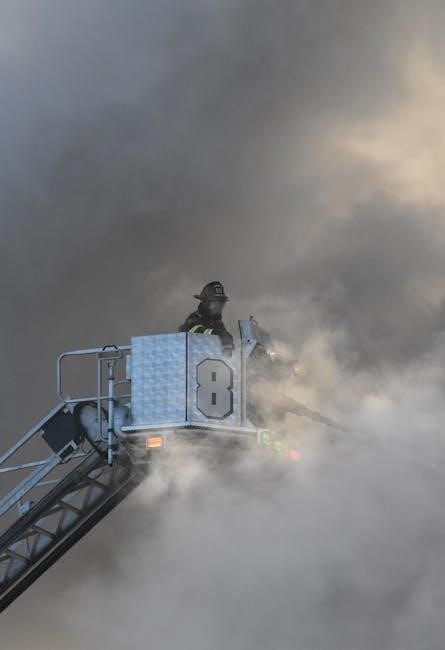
Understanding the Alarm Indicators and Signals
The First Alert Smoke & Carbon Monoxide Alarm uses LED indicators and horn signals to convey status, alarms, and errors․ The Power/Smoke LED flashes green intermittently when powered, while the CO LED remains off unless detecting CO․ Horn signals vary, with specific beep patterns for smoke, CO, low battery, malfunction, and end-of-life notifications, ensuring clear communication of the alarm’s status and any potential threats․
4․1 LED Indicators: Power/Smoke, CO, and Alarm Status
The First Alert Smoke & Carbon Monoxide Alarm features LED indicators to provide clear visual status updates․ The Power/Smoke LED flashes green intermittently during normal operation, indicating the alarm is powered and functioning․ When smoke is detected, it flashes red in sync with the alarm’s horn pattern․ The CO LED remains off during normal operation but flashes red when carbon monoxide is detected or when silencing a CO alarm․ These indicators help users quickly identify the type of threat and the alarm’s status, ensuring prompt action can be taken․ The LEDs also display specific patterns for low battery, malfunction, and end-of-life signals, making it easy to troubleshoot issues․ This visual system enhances safety by providing constant, reliable feedback on the alarm’s condition and any detected hazards․
4․2 Horn Signals: Different Beep Patterns and Their Meanings
The First Alert Smoke & Carbon Monoxide Alarm uses distinct horn signals to alert users to different conditions․ Smoke detection triggers three beeps, followed by a pause, repeating for smoke threats․ Carbon monoxide detection signals four beeps with a pause, indicating CO levels are rising․ A low battery is marked by a single chirp every minute, while a malfunction alerts with three chirps per minute․ End-of-life notification sounds five chirps every minute, ensuring users know when replacement is needed․ These patterns provide clear, audible feedback for immediate action․
4․3 Visual and Audible Warnings for Low Battery and Malfunction
The First Alert Smoke & Carbon Monoxide Alarm provides clear visual and audible warnings for low battery and malfunction․ A low battery triggers a single horn chirp every minute, accompanied by a flashing green Power/Smoke LED․ Malfunction is signaled by three horn chirps every minute and three green LED flashes․ These alerts ensure timely awareness of issues, allowing users to address them promptly, such as replacing the battery or checking the alarm’s operation to maintain safety and functionality․
4․4 End of Life Signal Indication
The First Alert Smoke & Carbon Monoxide Alarm signals its end of life with distinct alerts․ The horn emits five chirps every minute, and the Power/Smoke LED flashes green five times in sync․ This clear indication ensures users are notified when the alarm needs replacement, maintaining reliable protection․ The end-of-life signal is a critical feature, as outdated sensors may not detect threats accurately, ensuring safety by prompting timely unit replacement․
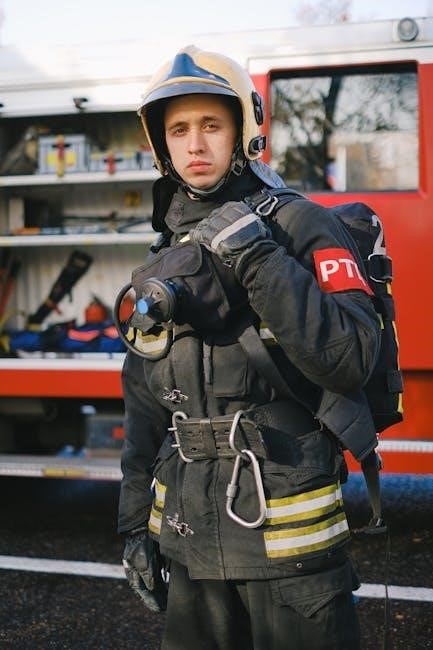
Testing and Silencing the Alarm
The First Alert Smoke & Carbon Monoxide Alarm features a single-button test/silence function․ Pressing the button tests the alarm or silences unwanted alerts, ensuring proper functionality․ Resetting the alarm restores it to normal operation after testing or silencing, providing a straightforward user experience․
5․1 How to Test the Smoke & Carbon Monoxide Alarm
To test the alarm, press and hold the test/silence button until the horn sounds three beeps, followed by a pause, and repeats․ The Power/Smoke LED will flash red during this process․ This ensures both smoke and carbon monoxide sensors are functioning correctly․ Testing confirms the alarm’s readiness to detect threats․ Regular testing, ideally monthly, is recommended to maintain reliability and ensure your safety․ This simple procedure guarantees the alarm is operational and prepared to alert you in case of emergencies․
5․2 Silencing Unwanted Alarms and Low Battery Chirps
Press and hold the test/silence button to silence unwanted alarms or low battery chirps․ This feature temporarily mutes the alarm for several minutes․ For low battery signals, the silence function delays the chirp for up to eight hours․ After silencing, ensure the alarm resets properly․ Always investigate the cause of an alarm to confirm it is a false alert․ Regular testing and maintenance help prevent unnecessary activations and ensure reliable performance․ Silencing does not disable the alarm’s detection capabilities․
5․3 Resetting the Alarm After Testing or Silencing
After testing or silencing, press and hold the test/silence button until the alarm sounds three times, indicating it has reset․ The LEDs will stop flashing, and the alarm will return to standby mode․ Ensure no smoke or carbon monoxide is present before resetting․ The alarm will automatically reset once the air is clear․ Regular resetting ensures proper functionality and accuracy in detection․ Always test the alarm after resetting to confirm it is working correctly․
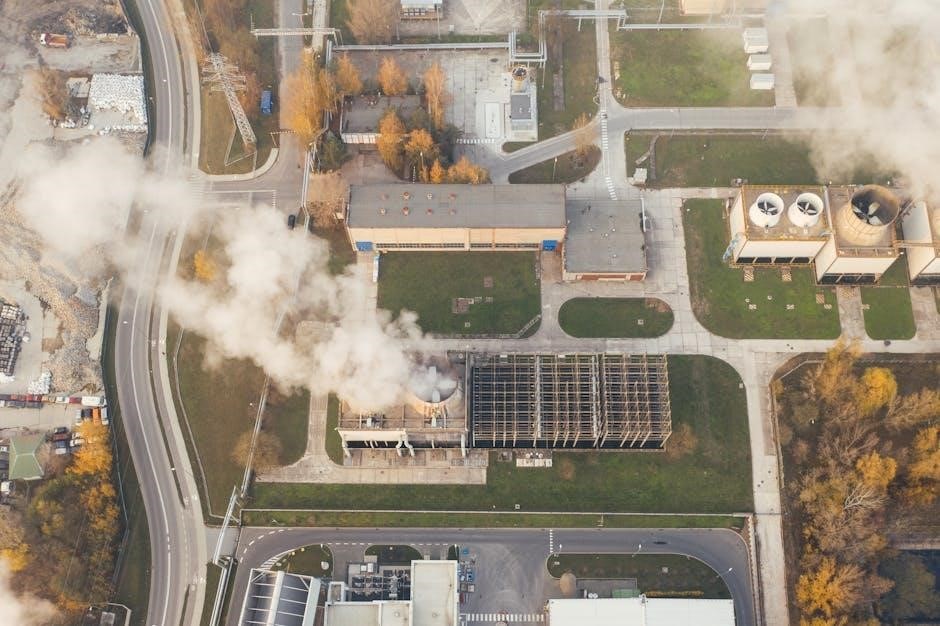
Maintenance and Troubleshooting
Regular cleaning, battery checks, and troubleshooting ensure optimal performance․ Replace batteries annually or when low battery signals occur to maintain reliability and safety․
6․1 Cleaning and Maintaining the Alarm
Regularly clean the alarm to ensure optimal performance․ Use a vacuum cleaner or soft brush to remove dust and debris from the grille․ Avoid using chemicals or water, as they may damage the sensor․ Check for any blockages in the sensor openings and ensure the alarm is free from obstructions․ Test the alarm after cleaning to confirm it is functioning properly․ Maintain the unit by following the manufacturer’s guidelines for battery replacement and sensor inspection to ensure reliable detection and safety․
6․2 Troubleshooting Common Issues
Address common issues by first checking the alarm’s power source and ensuring no obstructions block the sensors․ Low battery chirps indicate the need for replacement․ If the alarm sounds without cause, silence it and check for potential triggers like cooking fumes․ A malfunction signal, indicated by three chirps, requires resetting or replacing the unit․ Ensure proper installation and avoid placing alarms near dead air spaces․ Regular testing and cleaning can prevent false alarms and maintain reliability․
6․3 Replacing the Battery and Checking Its Condition
Replace the battery when the low-battery chirp sounds or the green LED flashes․ Silence the alarm by pressing the test/silence button, then remove the old battery and insert a fresh 9V alkaline battery․ Ensure the battery compartment is securely closed․ Test the alarm after replacement to confirm proper function․ Regularly check the battery’s condition and replace it annually or as indicated by the alarm’s signals․ Avoid using rechargeable batteries for optimal performance․
6․4 When to Replace the Alarm
Replace the alarm when the End of Life Signal sounds—5 chirps every minute with 5 green LED flashes․ The alarm should also be replaced every 10 years or if damaged․ If the unit is malfunctioning, replace it immediately․ Always ensure a functional alarm is installed to maintain safety․ Use the locking feature if needed to prevent unauthorized removal․ Refer to the manual for specific replacement guidelines and ensure compliance with safety regulations․

Safety Guidelines and Regulations
Follow NFPA recommendations for smoke and CO alarm placement․ Ensure proper installation, testing, and maintenance․ Replace alarms every 10 years or when the End of Life signal activates․
7․1 NFPA Recommendations for Smoke & CO Alarm Placement
The National Fire Protection Association (NFPA) recommends installing smoke alarms on every floor, in every sleeping area, and inside each bedroom․ For CO alarms, place them centrally outside each sleeping area and on every level of the home․ Combination smoke and CO alarms should be installed in areas where both threats exist․ Follow local codes and ensure no obstructions block detection․ Refer to NFPA 72 for smoke alarms and NFPA 720 for CO alarms for detailed placement requirements․
7․2 Minimum Coverage Requirements for Smoke Alarms
The NFPA recommends at least one smoke alarm on every floor, in every sleeping area, and inside each bedroom․ For maximum protection, use both ionization and photoelectric alarms to detect different fire types․ Install alarms in hallways outside sleeping areas and ensure coverage in all living spaces․ Refer to NFPA 72 for specific requirements, including placement in new constructions and interconnected systems for enhanced safety and compliance with local building codes․
7․3 Additional Safety Tips for Carbon Monoxide Detection
Install CO alarms on every level and outside sleeping areas for comprehensive protection․ Ensure proper ventilation in areas with fuel-burning appliances to reduce CO buildup․ Regularly inspect heating systems, chimneys, and fuel-burning equipment to prevent malfunctions․ Never use generators or grills indoors, as they emit deadly CO․ If the CO alarm sounds, evacuate immediately, open windows, and contact emergency services․ Stay informed about CO risks and maintain your alarms to ensure reliable detection and family safety․
7․4 Special Considerations for Mobile Homes
For mobile homes, install Smoke/CO alarms on inside walls to ensure detection reliability․ Avoid areas near fuel-burning appliances to prevent false alarms․ In older, less insulated homes, place alarms in every room for maximum safety․ Ensure alarms meet UL standards for mobile homes․ Regularly inspect for dead air spaces that might hinder detection․ Consider interconnecting alarms for enhanced safety and always follow local codes for installation requirements․
7․5 Dead Air Spaces and Their Impact on Detection
Dead air spaces can hinder smoke and CO detection by preventing gases from reaching the sensor․ Install alarms in central locations to avoid these areas․ On ceilings, place alarms near the center, at least 4 inches from walls or corners․ For peaked ceilings, install within 3 feet of the peak․ Wall-mounted alarms should be 4-12 inches from the ceiling line․ Ensure proper airflow to maintain detection accuracy and follow NFPA guidelines for optimal placement․

Interconnectivity with Other Alarms
Interconnectivity allows multiple alarms to sound simultaneously, enhancing safety․ First Alert alarms are compatible with other First Alert and BRK models, ensuring a unified detection system for reliable protection․
8․1 Interconnecting Smoke and CO Alarms for Enhanced Safety
Interconnecting smoke and CO alarms ensures all units sound simultaneously upon detection, providing comprehensive safety․ First Alert alarms are compatible with other First Alert and BRK systems, allowing for a unified network․ This interconnectivity enhances early warning systems, ensuring every household member is alerted regardless of where the threat is detected․ It also simplifies installation and maintenance, offering a reliable and integrated safety solution for your home․
8․2 Compatibility with Other First Alert and BRK Alarms
First Alert Smoke & Carbon Monoxide Alarms are compatible with other First Alert and BRK systems, ensuring seamless integration․ This compatibility allows for interconnected systems, where one alarm triggering alerts all units․ It supports unified safety networks, enhancing protection across your home․ The alarms work together to provide consistent alerts and notifications, simplifying safety management and ensuring reliable performance․
8․3 Benefits of a Unified Alarm System
A unified alarm system provides enhanced safety by ensuring all units work together seamlessly․ It offers comprehensive protection, with interconnected alarms sounding simultaneously to alert occupants throughout the home․ This system simplifies emergency response, reduces confusion, and ensures no threat goes unnoticed․ Unified systems also streamline maintenance and troubleshooting, making it easier to manage and maintain your safety devices․ The interconnected design enhances reliability and provides peace of mind, knowing your home is protected by a cohesive safety network․
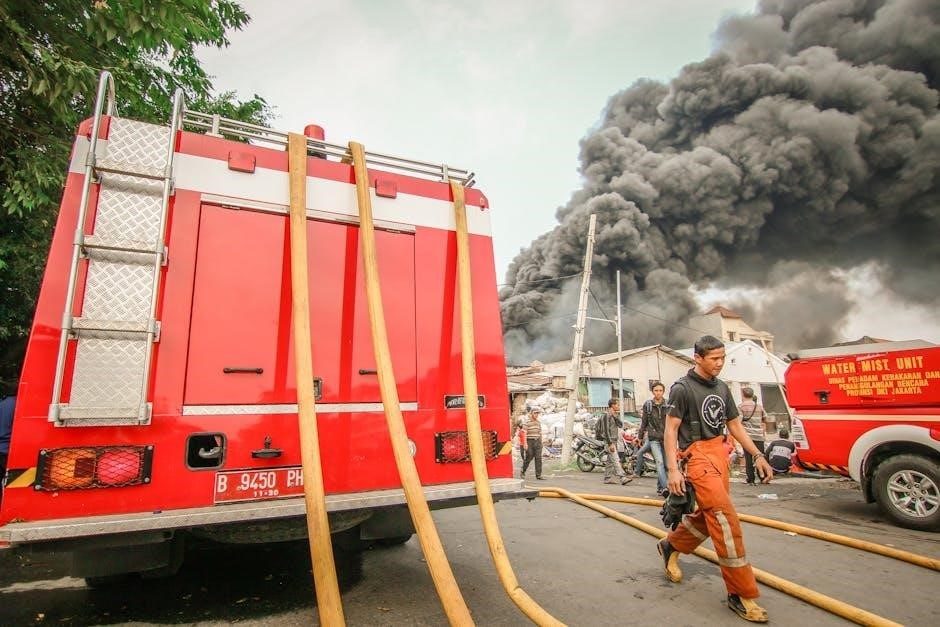
Warranty and Customer Support
The First Alert Smoke & Carbon Monoxide Alarm comes with a 10-year limited warranty․ Customer support is available via phone, email, or online resources for troubleshooting and assistance․
9․1 Warranty Information for the First Alert Smoke & CO Alarm
The First Alert Smoke & Carbon Monoxide Alarm is backed by a 10-year limited warranty, covering defects in materials and workmanship․ Registration is recommended for warranty validation․ The warranty period begins from the date of purchase, as stated on the sales receipt․ For full details, refer to the warranty terms outlined in the user manual or visit the manufacturer’s official website․ Warranty claims must adhere to specified conditions and procedures․
9․2 Contacting Customer Support for Assistance
For assistance with your First Alert Smoke & Carbon Monoxide Alarm, contact customer support via phone or email․ The support team is available to address questions, troubleshooting, and warranty inquiries․ Visit the official First Alert website for contact details and additional resources․ Phone support is available 24/7, and emails are typically responded to within 24 hours․ Ensure to have your product model and serial number ready for efficient assistance․ Refer to the manual for specific contact information and support options․
9․3 Accessing Online Resources and Manuals
First Alert provides comprehensive online resources, including user manuals, troubleshooting guides, and installation instructions․ Visit the official First Alert website to download the manual for your specific model, such as the SCO2 or PC1210V․ Additional resources include FAQs, video tutorials, and product registration․ For convenience, the website is optimized for easy navigation, ensuring quick access to support materials․ Use your product’s model number or name to find relevant documentation and ensure optimal use of your smoke and carbon monoxide alarm․
The First Alert Smoke & Carbon Monoxide Alarm is a vital safety device designed to protect homes and families from fire and CO hazards․ With its advanced features, easy installation, and clear guidelines, it ensures reliable performance․ Regular maintenance and adherence to manual instructions are crucial for optimal functionality․ By investing in this alarm, users gain peace of mind, knowing they are equipped with a state-of-the-art system to safeguard against potential threats․ Proper use and understanding of its features can save lives in critical situations․